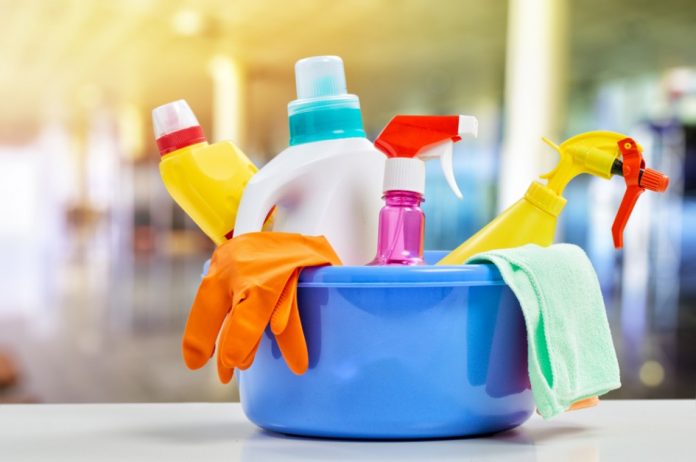Scientists say that a very common household chemical lurking in your cleaning cupboard or laundry room may be causing respiratory infections in your children. What is this caustic and dangerous chemical? It’s bleach, which is commonly used to disinfect areas, whiten clothes, remove stains, and more. This new research published online in Occupational & Environmental Medicine says bleach may depress the immune system, leading to more respiratory and other infections in children.
Most people know that combining bleach with other cleaners can produce toxic gases that can cause minor problems like irritating the mucous membranes (eyes, nose, and throat) to serious problems like fluid in the lungs and even death. In fact, the Occupational Safety And Health Association requires that those who use bleach in the workplace where a mask and protective gloves. When was the last time you wore gloves and a mask when you poured some bleach casually in your clothes washer?
As part of the current study, scientists evaluated the potential impact of bleach exposure among more than 9,000 children (ages 6 to 12) from different countries (The Netherlands, Finland, and Spain). Over a 12 month period, their parents completed questionnaires regarding the number and frequency of flu, tonsillitis, sinusitis, bronchitis, ear infection, and pneumonia. They were also asked if they used bleach at least weekly to clean their homes.
Bleach was commonly used to clean homes in Spain—72 percent. By contrast, only 7 percent of Finnish homes used bleach while cleaning. In addition, the researchers noted that all schools in Spain were cleaned with bleach, whereas Finnish schools were not.
After adjusting for factors such as smoking at home, education level, household mold, and even school cleaning with bleach, the researchers determined that children regularly exposed to bleach were far more likely to experience infections. Remarkably instances of flu (20 percent higher), tonsillitis (35 percent higher) and recurrent infections (18 percent higher) were significantly higher among this group of children.
While this study is only observational (doesn’t prove that bleach increases infection risk) and the study authors admit they did not account for other cleaners being used in the household, it does confirm previous studies that suggest cleaning products may increase respiratory problems.
The study authors further hypothesize that volatile airborne compounds created while cleaning with bleach may damage lung cells and increase respiratory inflammation, making infection more likely.
Instead of dousing your home with toxic bleach, consider these natural alternatives.
To disinfect surfaces: Combine one and a half cups of distilled water, half cup of vinegar, one tablespoon of castile soap, and 30 drops of your favorite (preferably antimicrobial) essential oils in a glass spray bottle and shake vigorously. Shake well before each use and spray desired area with mixture, wiping clean afterward.
To whiten clothes: Fill a half gallon glass jug with one and a half cups 3% hydrogen peroxide, half cup of lemon juice, 1 tablespoon of citric acid, 20 drops of lemon essential oil, and 10 drops of thyme essential oil. Then fill the remainder of the jug with distilled water. Shake well and use as you would normal bleach.















